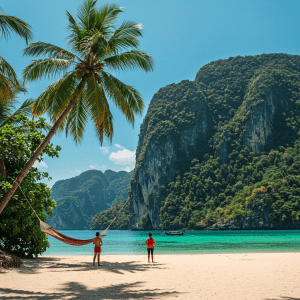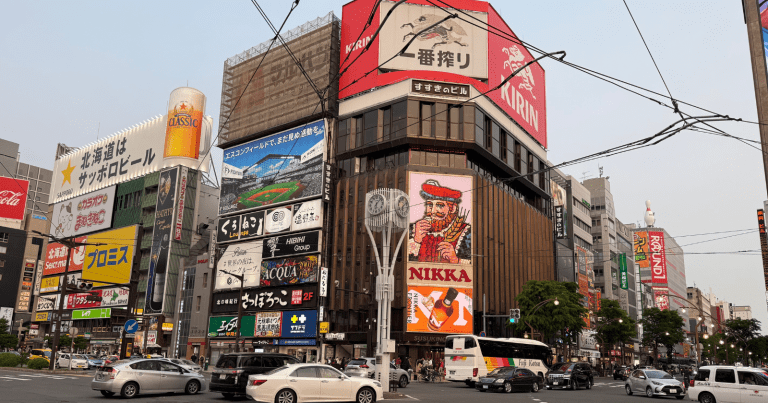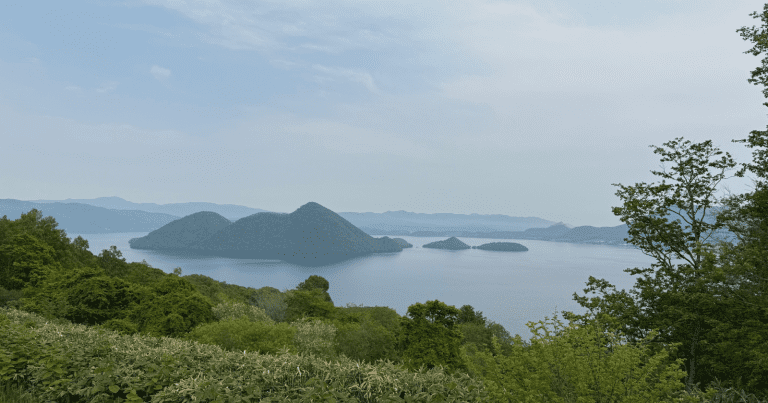
Thailand, a land celebrated for its radiant smiles, serene temples, and breathtaking landscapes, holds a special allure for families seeking both adventure and relaxation. Beyond the well-trodden paths, we discover coastal havens that perfectly blend stunning natural beauty with the practical needs and joyful curiosity of children. When considering Thailand’s 7 best beaches and islands for families with kids, we embark on a journey that is as much about sandy shores and splashing waves as it is about gentle introductions to a rich and hospitable culture.
Traveling with children anywhere requires thoughtful planning, but in a place like Thailand, it also presents a unique opportunity for cross-cultural learning. Thai society places a high value on family and respect, particularly for elders and children. This inherent warmth often translates into genuinely welcoming interactions with visitors, making it an ideal environment for families. Understanding basic courtesies, such as the ubiquitous “wai” (a prayer-like gesture with a slight bow), removing shoes before entering homes or temples, and speaking softly, not only shows respect but also enhances the travel experience by opening doors to more meaningful connections with local people. We find that showing genuine interest in local life, whether it’s observing monks collecting alms in the morning or sampling street food from a vibrant market stall, enriches the journey far beyond postcard views.
The concept of sanuk, which roughly translates to ‘fun’ or ‘enjoyment’, is deeply embedded in the Thai way of life. It’s about finding joy in everyday activities and social interactions. For traveling families, this means embracing the playful spirit of the culture. Many activities that locals enjoy, such as visiting vibrant night markets with their dazzling array of snacks and trinkets or simply spending leisurely time by the water, align perfectly with what makes children happy. This cultural backdrop of warmth, respect, and joy provides a comforting and engaging environment for families exploring Thailand’s coastal treasures.
Choosing the right island or beach is crucial for a successful family trip. The ideal spot typically offers calm, shallow waters for safe swimming, readily available amenities like family-friendly restaurants and accommodations, easy accessibility, and a range of activities that cater to different ages. Avoiding overly crowded or party-centric locations ensures a more relaxed and suitable atmosphere. Thailand offers a diverse array of options, from large islands with extensive infrastructure to smaller, more laid-back pockets of paradise. Our focus is on those places that consistently deliver on safety, convenience, and that special spark of Thai hospitality that makes everyone feel welcome.
Navigating new cultural landscapes with children offers teachable moments at every turn. Simple acts like encouraging children to practice a ‘wai’ or say ‘hello’ (sawasdee krap/ka) can lead to delightful exchanges. For instance, encountering a street vendor selling colourful fruit smoothies: instead of just pointing, you might encourage your child to learn the Thai word for thank you after receiving their drink. This is not about becoming fluent, but about showing willingness to engage respectfully with the local culture, a practice that resonates deeply in Thailand.
Let us now explore seven of Thailand’s finest coastal gems, each offering unique charms for families, while keeping in mind the cultural insights that help us travel not just as tourists, but as respectful guests.
1. Koh Lanta (Krabi Province)
Koh Lanta is a perennial favorite for families, and for good reason. This long, slender island off the coast of Krabi boasts numerous beaches, many with calm, shallow waters perfect for young swimmers. Klong Dao Beach and Long Beach (Phra Ae) on the northern part of the island are particularly popular due to their gentle slopes and proximity to amenities. Unlike some busier islands, Koh Lanta maintains a relaxed, laid-back vibe. It offers a blend of comfortable resorts and more budget-friendly bungalows, many situated directly on the beach. Activities for kids include exploring the island’s national park (keeping an eye out for monkeys!), taking boat trips to nearby islands like Koh Rok for snorkeling (choose tours suitable for beginners), or simply enjoying endless hours building sandcastles on the expansive beaches. The island’s infrastructure is well-developed without feeling overly commercialized, striking a good balance for family needs.
2. Phuket (Various Beaches)
Phuket, Thailand’s largest island, offers unparalleled convenience with its international airport and wide range of accommodation and activity options. While some areas are known for nightlife, many beaches on the island’s west coast are excellent for families. Kata Beach is a standout, offering soft sand, clear, shallow water, and a good selection of beachfront restaurants and shops. Karon Beach is another solid choice, known for its long stretch of sand and slightly bigger waves (though still generally manageable). For more tranquility, Kamala Beach provides a quieter bay. Phuket offers numerous kid-friendly attractions beyond the beach, such as the Phuket Aquarium, splash parks, and cultural shows like Phuket FantaSea (though researching appropriateness for your family is advised). Its size means you can find everything from quiet coves to bustling tourist centers, allowing families to choose their preferred pace. Navigating Phuket can be done via local taxis or songthaews, offering a glimpse into local transportation.
3. Koh Chang (Trat Province)

Located in the Gulf of Thailand near the Cambodian border, Koh Chang is Thailand’s second-largest island and offers a less developed, more natural experience than Phuket. White Sand Beach (Hat Sai Khao) is the most popular and has plenty of family-friendly resorts and restaurants, alongside gentle waves. Kai Bae Beach and Klong Prao Beach to the south are slightly quieter alternatives with beautiful scenery. Koh Chang is characterized by lush jungle interiors and several impressive waterfalls (accessible via relatively easy treks suitable for older kids). Snorkeling and boat trips to surrounding smaller islands like Koh Rang or Koh Wai are major draws. The island retains a relaxed, slightly bohemian atmosphere, appealing to families who appreciate natural beauty and outdoor activities. The roads can be steep in places, so choosing accommodation carefully based on your comfort with transport is wise.
4. Koh Samui (Surat Thani Province)
Koh Samui in the Gulf of Thailand is a well-established tourist destination with a good balance of luxury resorts and accessible options. Chaweng Noi, the southern part of the main Chaweng Beach, is quieter than the north and features calm, clear waters. Bophut Beach, home to the charming Fisherman’s Village, offers a relaxed atmosphere, a lovely walking street with shops and restaurants, and safe swimming. Lamai Beach also has family-friendly sections. Samui is easy to get around via taxis or rental cars/scooters (though caution is advised with scooters). Attractions for families include visiting the Secret Buddha Garden, exploring waterfalls, trying elephant sanctuaries with ethical practices, or taking boat trips to Ang Thong Marine Park (choose tours that minimize travel time and include kid-friendly activities). The island has a sophisticated infrastructure while retaining pockets of traditional life, particularly away from the main tourist hubs.
“Travel is less a matter of seeing things than of seeing how you see them.”
This quote resonates when traveling with children in a new culture. Their fresh perspective and innocent curiosity can often highlight aspects of Thai life and hospitality that adults might overlook, encouraging us to see the world, and its people, with renewed openness and empathy.
5. Koh Tao (Surat Thani Province)
While primarily known as a diving hub, Koh Tao also offers pockets perfect for families, especially those with slightly older children who might be interested in learning to snorkel or even try beginner diving courses. Sairee Beach is the longest and most developed, with plenty of restaurants and relatively shallow areas, though it can be busy. For quieter options, look to Chalok Baan Kao Bay in the south, which is sheltered and has calm waters. The island’s small size makes it easy to explore. Snorkeling directly from the beach is possible in some areas, and boat trips to nearby sites like Shark Bay or Koh Nang Yuan offer fantastic underwater exploration opportunities. The emphasis here is on marine activities and enjoying the stunning coastal scenery. While transport is mainly by taxi or scooter, many places are walkable within specific bays. Respecting the marine environment is crucial here, reflecting the growing awareness of conservation in Thailand.
6. Hua Hin & Cha-am (Prachuap Khiri Khan & Phetchaburi Provinces)
Unlike the islands, Hua Hin and Cha-am are coastal towns on the mainland, easily accessible from Bangkok (a few hours’ drive or train ride). This makes them excellent options for families looking for a quick getaway or those who prefer not to fly domestically. Hua Hin offers a long, wide sandy beach, historical connections to the Thai royal family (making it a respected destination), and a wide array of accommodations, from large resorts to guesthouses. Activities include pony rides on the beach, visiting the local markets (especially the famous night market for food and souvenirs), exploring the Hua Hin Hills Vineyard (some offer family activities), or visiting Vana Nava Water Jungle, a large water park. Cha-am, just north, is even more laid-back and popular with Thai families, offering a very local beach experience with plenty of street food vendors and beach chairs for rent. These destinations provide a comfortable and authentic Thai coastal town experience, less focused on international tourism than the major islands.
7. Koh Kood (Trat Province)

For families seeking a tranquil escape surrounded by pristine nature, Koh Kood offers a truly serene experience. Located near Koh Chang, but significantly less developed, it boasts stunningly clear turquoise waters and white sandy beaches often backed by coconut palms and lush jungle. Accommodation ranges from eco-resorts to simple bungalows, catering to those who prioritize natural beauty over extensive amenities. Beaches like Ao Tapao and Ao Phrao offer calm, shallow swimming areas.
Activities are focused on nature: swimming, snorkeling, kayaking through mangrove forests, and visiting impressive waterfalls like Klong Chao waterfall where you can sometimes swim in the pool below. It’s a place to disconnect, enjoy quality family time in nature, and experience a slower pace of life. Transport is limited, usually involving resort transfers or shared taxis, adding to its secluded feel. This island embodies a sense of peaceful retreat, aligning with aspects of mindfulness and appreciation for the natural world often valued in Southeast Asian philosophies.
Parting Thoughts
Traveling with children offers a unique lens through which to view a culture. Their openness often bypasses adult reservations, leading to spontaneous, heartwarming interactions. By choosing destinations like these, which offer safety, comfort, and opportunities for gentle engagement, we facilitate these connections. Remember that showing patience, smiling often, and attempting a few basic Thai phrases can transform routine transactions into pleasant cultural exchanges. It’s these small efforts that build bridges and create lasting memories.
“Travel is fatal to prejudice, bigotry, and narrow-mindedness, and many of our people need it sorely on these accounts.”
While Twain wrote this long ago, its truth endures. Family travel in places like Thailand teaches not just geography, but adaptability, patience, and the value of diverse perspectives. It broadens horizons for both children and adults, fostering empathy and understanding through shared experiences with people from different backgrounds. This is the deeper reward of such journeys.
In planning a family trip to Thailand, consider the rhythm of your family. Do you prefer a place with lots of organized activities and easy transport (Phuket, Koh Samui)? Or are you seeking tranquility and natural exploration (Koh Kood, Koh Chang)? The mainland options like Hua Hin offer cultural proximity to Bangkok and a more local feel. Regardless of the choice, approaching the journey with respect for Thai customs, an openness to new experiences, and a focus on simple joys – playing on the beach, trying new foods, interacting kindly with locals – will ensure a rewarding and enriching family adventure. These Southeast Asian islands and coastal towns provide an incredible backdrop for creating cherished family memories while fostering a budding appreciation for a beautiful culture.
Ultimately, exploring Thailand’s 7 best beaches and islands for families with kids is about more than just finding the perfect stretch of sand. It’s an invitation to step gently into a new cultural space, to learn and adapt together as a family, and to build connections that transcend language barriers through smiles and shared moments of discovery. It’s a journey of sun, sand, and profound human warmth.







